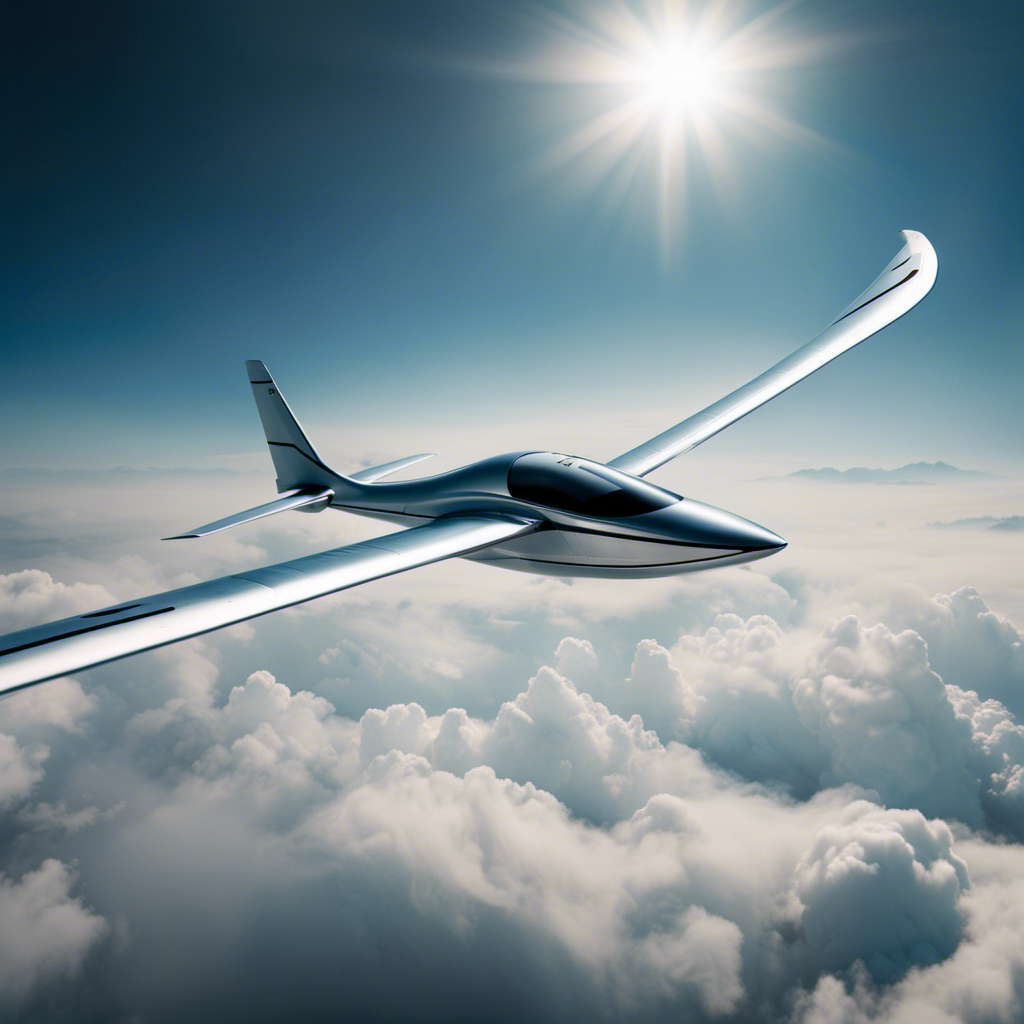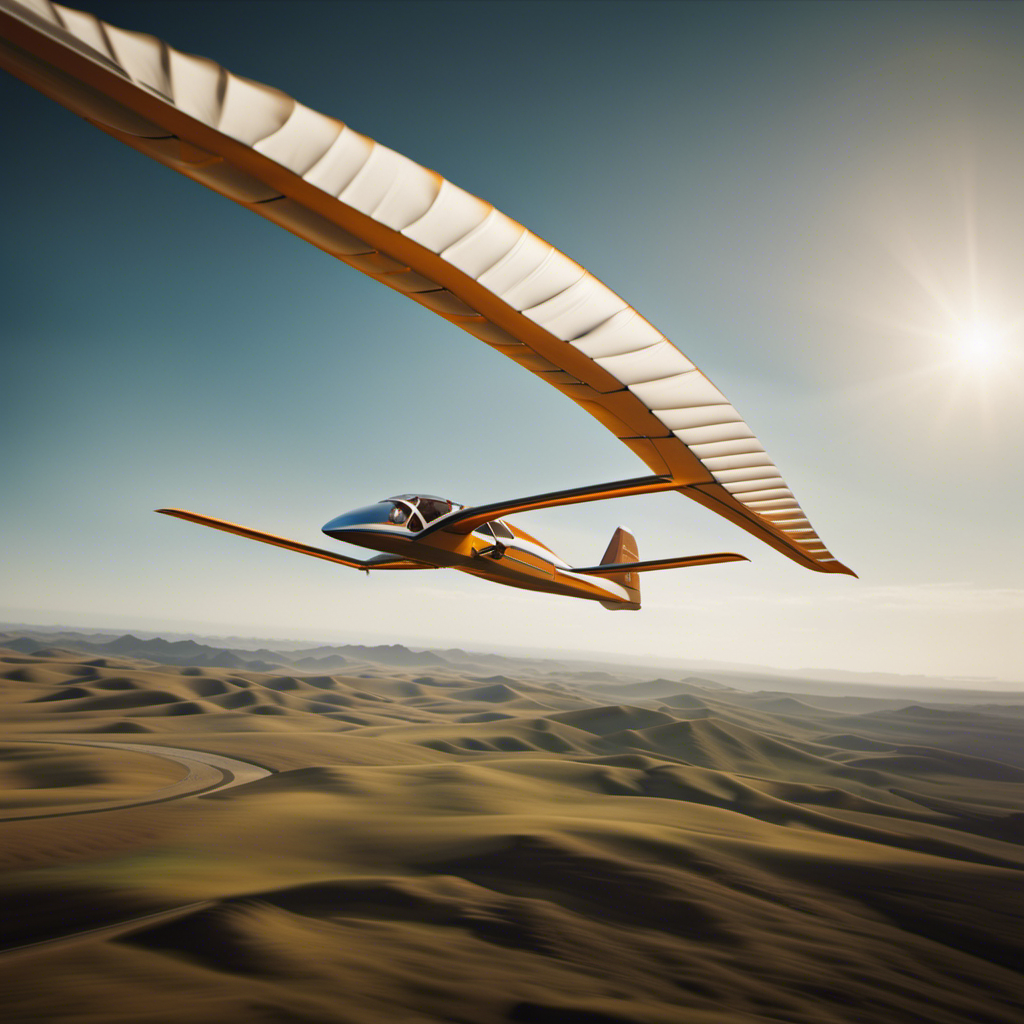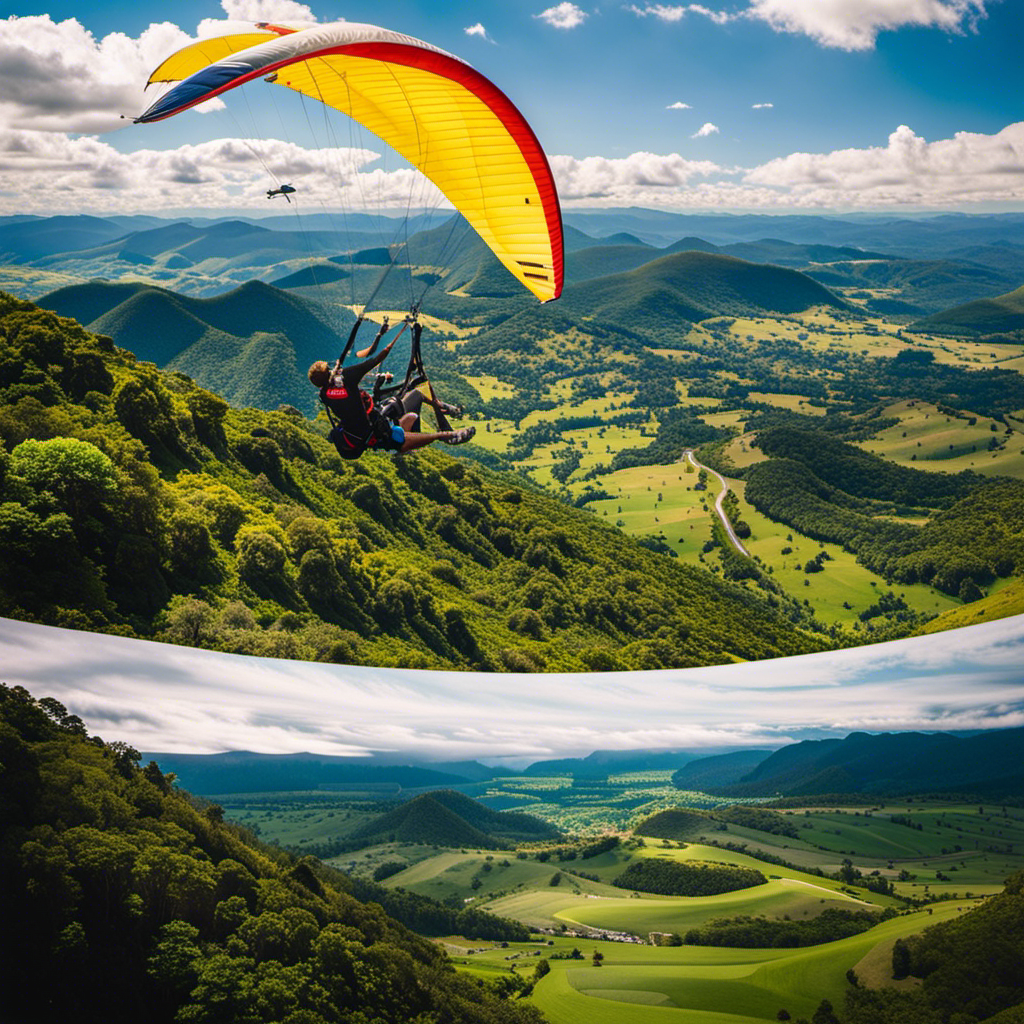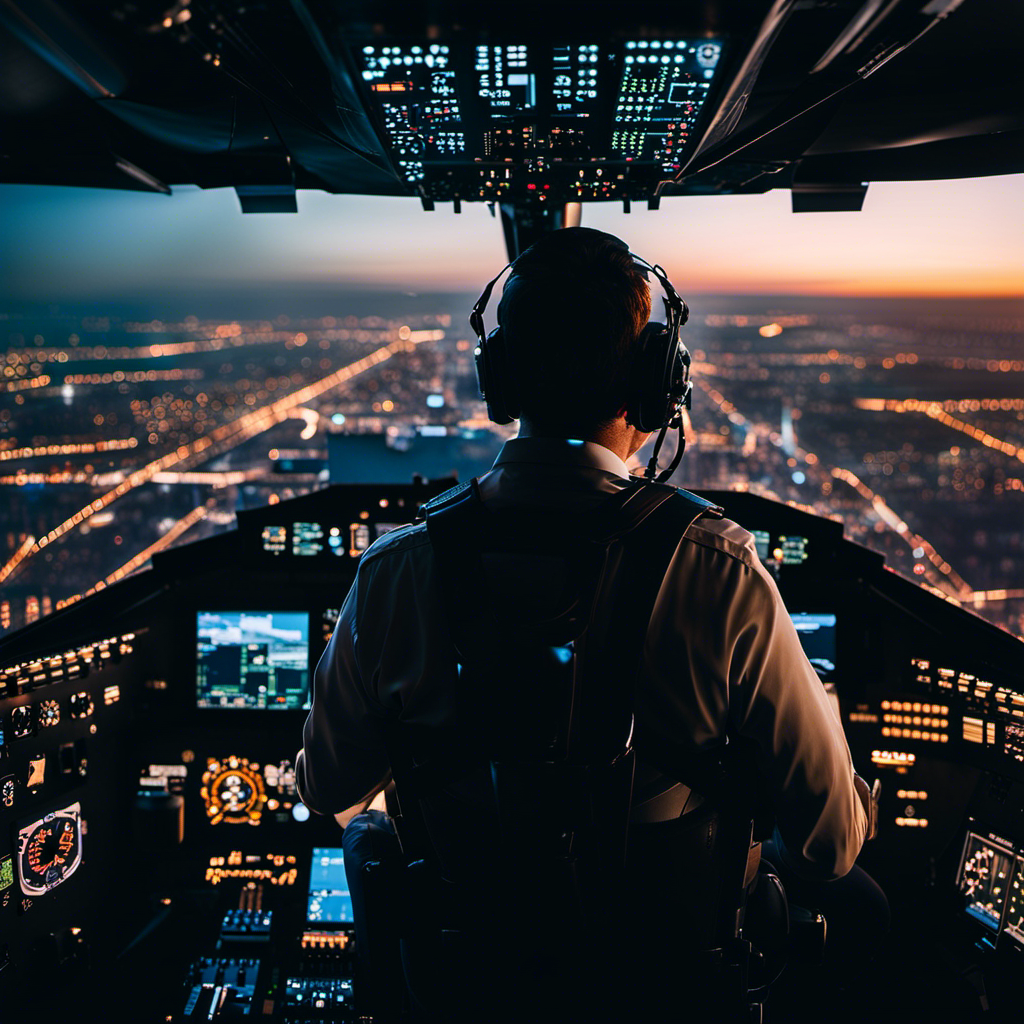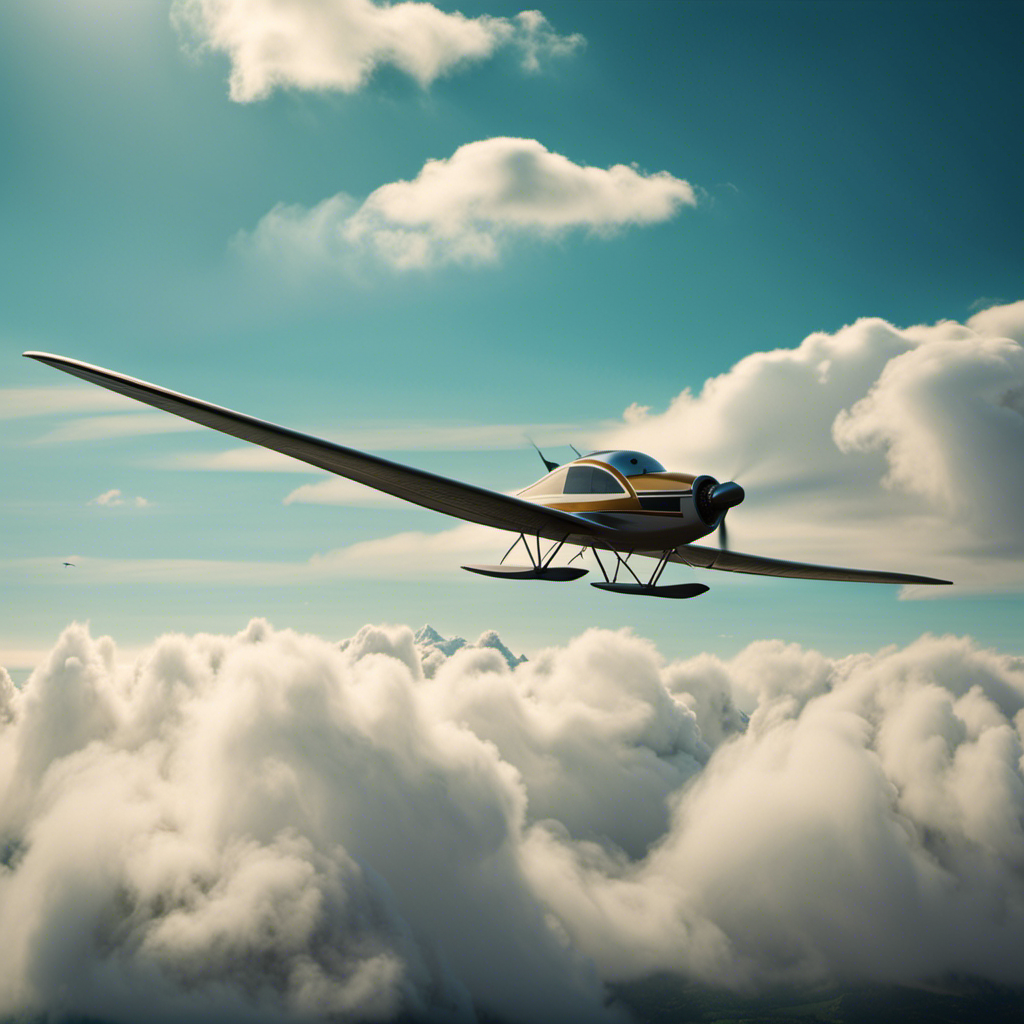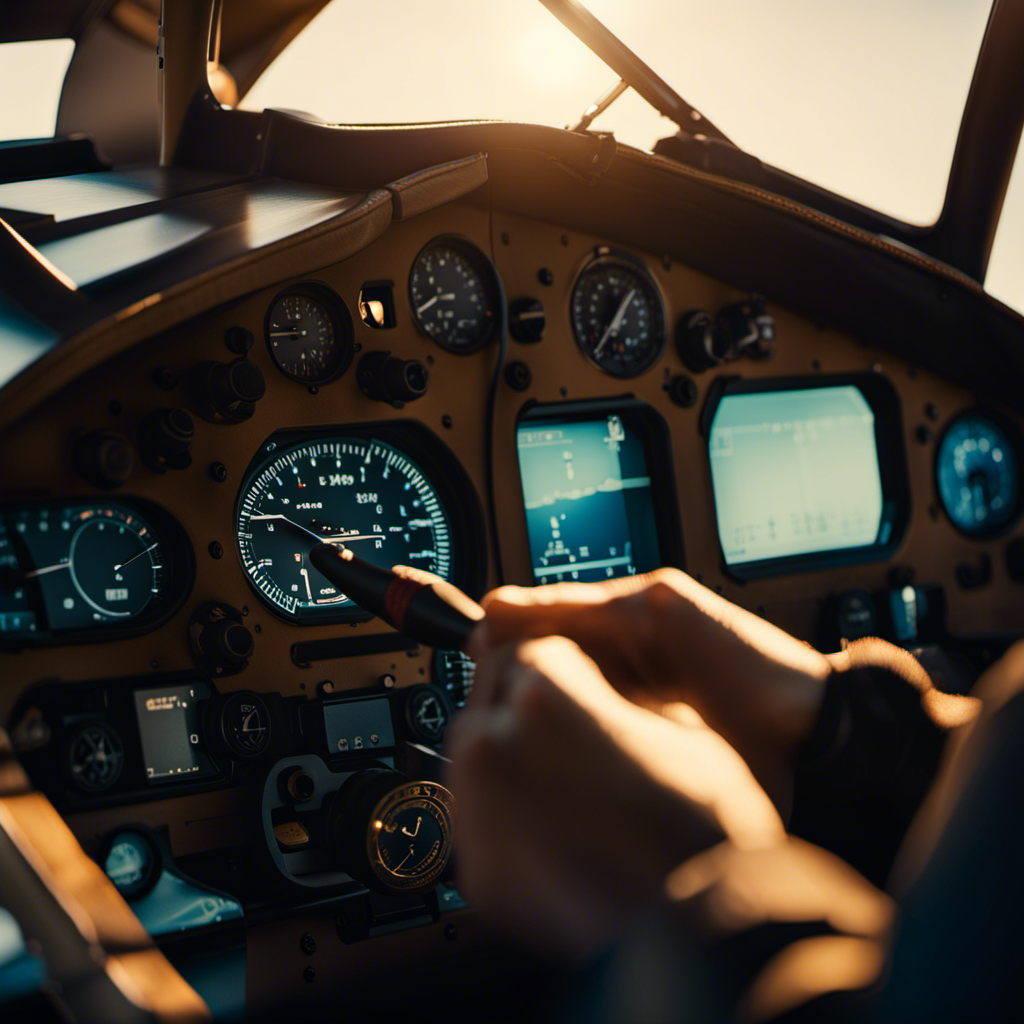As a glider pilot, I am always amazed by the incredible ability to soar through the sky without any engine power. How do these graceful aircrafts effortlessly glide through the air?
In this article, we will delve into the fascinating world of glider aerodynamics, exploring the principles of lift and gravity, the design and structure of gliders, and the ways in which they generate lift.
Join me on this journey as we unravel the secrets behind the mesmerizing flight of gliders.
Key Takeaways
- Gliders are able to fly without propulsion by utilizing thermals and updrafts for additional lift.
- Glider pilots actively seek and exploit thermals and updrafts to extend their flight time and distance.
- Training in finding and exploiting thermals and updrafts is a crucial part of glider pilot training, requiring advanced techniques and sharp decision-making skills.
- Advancements in glider technology, such as improved materials, wing designs, and control systems, have further enhanced the performance, efficiency, and safety of gliders.
Understanding the Basics of Aerodynamics
To understand the basics of aerodynamics, you need to grasp how air flows around an object.
In bird flight, understanding the aerodynamic principles is crucial. Birds have evolved over millions of years to efficiently navigate through the air. They utilize their wings to generate lift, allowing them to stay aloft.
The shape of their wings, along with the angle of attack, enables them to create a pressure differential that generates lift. Additionally, the impact of air density on aerodynamic performance cannot be ignored.
Air density plays a significant role in determining the lift and drag forces acting on an object. As air density increases, the lift generated also increases, allowing for better maneuverability.
Understanding these principles paves the way to exploring the role of lift and gravity in glider flight.
The Role of Lift and Gravity in Glider Flight
Understanding how lift and gravity work together is crucial for grasping the concept of glider flight. Glider flight mechanics rely on a delicate balance between these forces. Here are some key points to consider:
-
Lift: The shape of the glider’s wings produces lift, which keeps the glider airborne. Air flowing over the wings generates an upward force, creating a pressure difference that sustains flight.
-
Gravity: Gravity pulls the glider downward towards the Earth. It provides the necessary weight for the glider to generate lift.
-
Glider flight dynamics: The glider’s design and structure determine its flight characteristics, such as stability, maneuverability, and efficiency. Understanding these dynamics is essential for safe and effective glider operation.
-
Glider control surfaces: Ailerons, elevators, and rudders enable pilots to control the glider’s attitude, direction, and altitude during flight.
-
Energy management: Glider pilots must skillfully manage their energy by utilizing rising air currents, known as thermals, to gain altitude and maintain flight.
Exploring the Design and Structure of Gliders
Take a moment to consider the intricate design and structure of gliders, as they play a vital role in their ability to soar through the air gracefully. Glider design innovations have come a long way in optimizing their performance and efficiency.
One key aspect is the choice of materials used in glider construction. Lightweight yet strong materials, such as carbon fiber composites and fiberglass, are commonly used to reduce weight and increase durability. These materials allow for the creation of sleek, aerodynamic shapes that minimize drag and maximize lift.
The wings are carefully designed with high aspect ratios, tapered leading edges, and efficient airfoil shapes to generate lift. The fuselage is streamlined, reducing turbulence and drag. These design choices are crucial in enabling gliders to achieve lift and maintain flight without the need for propulsion.
Transitioning into the subsequent section about ‘how gliders generate lift’, it is important to understand the principles behind the design and structure of gliders.
How Gliders Generate Lift
Transitioning into the subsequent section, let’s delve into how gliders generate lift. To understand how these graceful aircraft stay aloft, it is essential to grasp the aerodynamic principles at play.
Here are the key factors behind generating lift:
- Angle of Attack: By angling the wings upwards, gliders create a higher pressure below the wing compared to above, resulting in lift.
- Bernoulli’s Principle: As air flows over the curved upper surface of the wing, it accelerates and creates lower pressure, contributing to lift.
- Wing Shape: The streamlined design and cambered shape of glider wings optimize lift production.
- Airfoil Design: The specific contour of the wing, including the curvature, thickness, and profile, affects lift generation.
Understanding these principles allows gliders to harness the power of the air to stay airborne effortlessly.
Transitioning to the subsequent section, we will explore the importance of weight and balance in glider flight.
The Importance of Weight and Balance in Glider Flight
Maintaining proper weight and balance is crucial for a glider to achieve stable and controlled flight. The importance of weight distribution cannot be overstated in glider flight. A well-balanced glider ensures that the center of gravity is correctly positioned, allowing for optimal performance and maneuverability.
Uneven weight distribution can cause the glider to become unstable, affecting its ability to maintain altitude and control its direction. Additionally, the effect of wind on glider flight must be considered. Wind can influence the glider’s speed, lift, and stability. By understanding how wind affects the glider, pilots can make adjustments to their flight plan and take advantage of updrafts or avoid turbulent areas.
Now, let’s explore the techniques used for controlling and maneuvering a glider.
Controlling and Maneuvering a Glider
To achieve precise control and maneuverability, pilots must master the use of different control surfaces in a glider. The primary control surfaces include the ailerons, elevator, and rudder.
The ailerons are located on the trailing edge of the wings and are used to control roll by changing the lift distribution between the wings. The elevator is positioned on the horizontal stabilizer and controls pitch by adjusting the angle of attack. Lastly, the rudder, located on the vertical stabilizer, is used for yaw control.
Pilots employ various controlling techniques such as coordinated turns, slips, and stalls to navigate through different weather conditions. These techniques allow for smooth and precise movements in the air.
The next section will focus on harnessing thermals and updrafts for sustained flight, which is essential for gliding without propulsion.
Harnessing Thermals and Updrafts for Sustained Flight
Harnessing thermals and updrafts allows glider pilots to sustain flight for extended periods by utilizing natural sources of lift. Understanding the principles of thermal dynamics and implementing effective glider flight strategies are crucial for maximizing flight performance.
Thermals are columns of warm air that rise due to temperature differences between the ground and the atmosphere. Glider pilots can detect thermals by observing the movement of clouds, birds, or even by feeling changes in the air temperature. By circling within a thermal, the glider can gain altitude and remain airborne for longer durations.
Updrafts, on the other hand, are created by wind encountering obstacles such as hills or mountains. These upward currents of air provide an additional source of lift for gliders. By actively seeking out and exploiting thermals and updrafts, glider pilots can extend their flight time and cover greater distances, showcasing their expertise in maximizing flight performance.
The Role of Glider Pilots in Maximizing Flight Performance
After learning about the incredible power of thermals and updrafts, it is time to delve into the crucial role of glider pilots in maximizing flight performance. Glider pilot training is rigorous and comprehensive, ensuring that pilots have the necessary skills to navigate the skies with precision. Here are four key aspects of glider pilot training that evoke emotion and admiration for these skilled aviators:
-
Techniques: Pilots learn advanced techniques for finding and exploiting thermals and updrafts, enabling them to stay aloft for extended periods.
-
Decision-making: Pilots develop sharp decision-making skills to assess weather conditions, plan routes, and make split-second judgments during competitions.
-
Precision flying: Pilots train extensively in maintaining precise control of the glider, executing smooth turns, and optimizing airspeed.
-
Mental fortitude: Glider competitions demand mental fortitude, as pilots must stay focused and committed to their strategies amidst intense competition.
Transitioning into the subsequent section about safety measures and precautions in glider aviation, it is essential to understand the importance of maintaining the highest level of safety in this exhilarating sport.
Safety Measures and Precautions in Glider Aviation
When flying a glider, it’s crucial to prioritize safety by following established measures and precautions. As a glider pilot, I understand the importance of being well-prepared for any emergency situation that may arise during a flight. Adhering to proper emergency procedures and being aware of weather conditions are essential for a safe and successful journey. To emphasize the significance of safety in glider aviation, let’s take a look at the following table:
| Safety Measure | Purpose | Emotional Response |
|---|---|---|
| Pre-flight inspections | Ensure aircraft readiness | Peace of mind |
| Training and proficiency | Improve pilot skills | Confidence |
| Monitoring weather changes | Avoid hazardous conditions | Security |
| Emergency landing techniques | Safely land in case of an issue | Relief |
Advancements in Glider Technology and Future Possibilities
To stay up to date with the latest advancements in glider technology and explore future possibilities, you should research and connect with experts in the field.
Glider technology has come a long way in recent years, thanks to advancements in materials, aerodynamics, and control systems. These advancements have allowed for increased performance, efficiency, and safety in glider flight.
For example, the use of carbon fiber composites has made gliders lighter and stronger, while improved wing designs have enhanced lift and reduced drag. Additionally, advancements in control systems, such as fly-by-wire technology, have made gliders more maneuverable and easier to handle.
Looking ahead, future possibilities in glider technology include the development of electric propulsion systems, improved energy storage solutions, and the integration of autonomous capabilities.
Exciting times lie ahead for glider enthusiasts and researchers as they continue to push the boundaries of what is possible in unpowered flight.
Frequently Asked Questions
Are gliders dangerous to fly?
Yes, gliders can be dangerous to fly if proper safety measures are not followed. Risks include loss of control, turbulence, and landing accidents. Pilots must have appropriate training and adhere to safety protocols to minimize these risks.
How long can a glider stay in the air without an engine?
The maximum glider endurance depends on various factors such as weather conditions, altitude, and pilot skill. Without an engine, a glider can stay in the air for several hours to even a whole day.
Can gliders fly at night?
Yes, gliders can fly at night. Glider navigation relies on instruments like altimeters, compasses, and GPS. However, night flying is challenging due to limited visibility and the increased impact of weather conditions on glider flights.
What is the difference between a glider and a powered aircraft?
A glider is an unpowered aircraft that relies on natural forces, such as wind and gravity, to maintain flight. It differs from a powered aircraft in that it lacks an engine and must rely solely on glider stability and performance to stay aloft.
How do gliders land safely without an engine?
Glider landing techniques are a marvel of engineering. By utilizing precise maneuvers and emergency procedures, we ensure safe landings without the luxury of an engine. It’s a testament to the ingenuity of glider pilots.
Conclusion
In conclusion, the world of glider flight is a fascinating realm where the laws of physics and the ingenuity of human engineering intertwine. Glider pilots master the art of soaring through the skies without propulsion, understanding the principles of aerodynamics and harnessing thermals for sustained flight.
But what does the future hold for glider technology? With advancements on the horizon, the possibilities are endless. As we eagerly await the next breakthroughs, we can’t help but wonder what new heights glider aviation will reach.
With a heart that soars as high as the skies, Aria, affectionately known as “Skylark,” is the driving force behind Soaring Skyways. Her journey into the gliding world began as a young dreamer gazing up at the soaring birds, yearning to experience the weightlessness and freedom they embodied. With years of experience both in the cockpit and behind the scenes, Aria’s commitment to the gliding community is unwavering.
